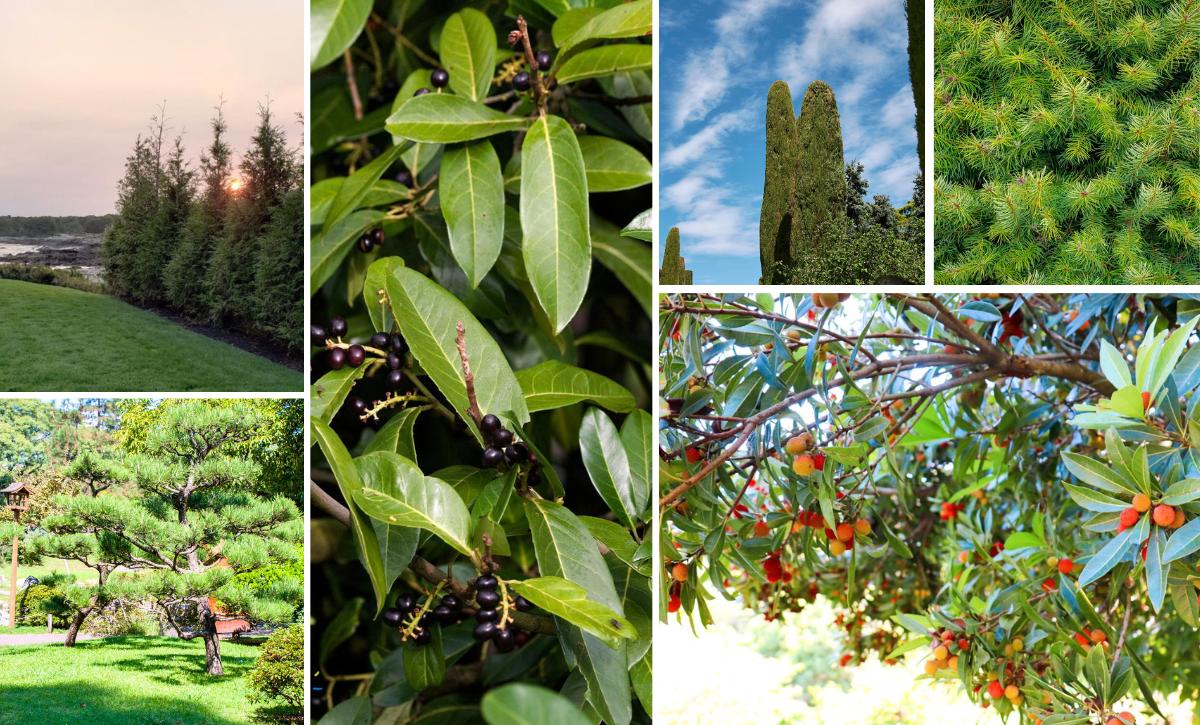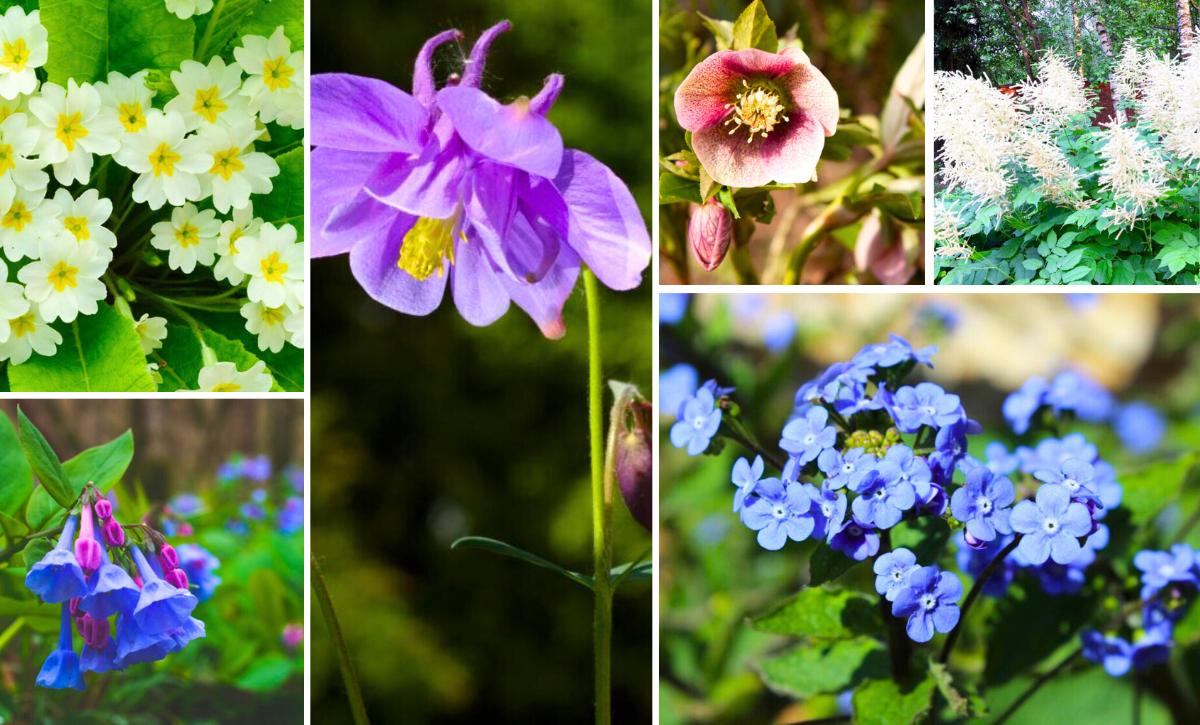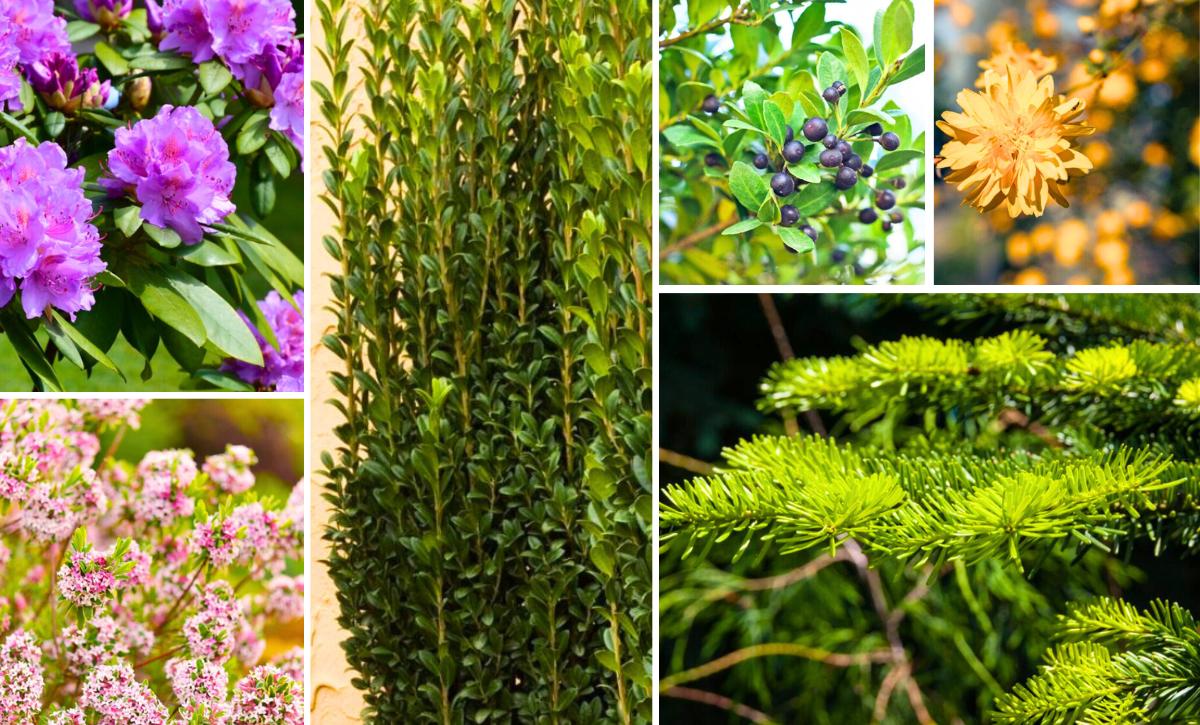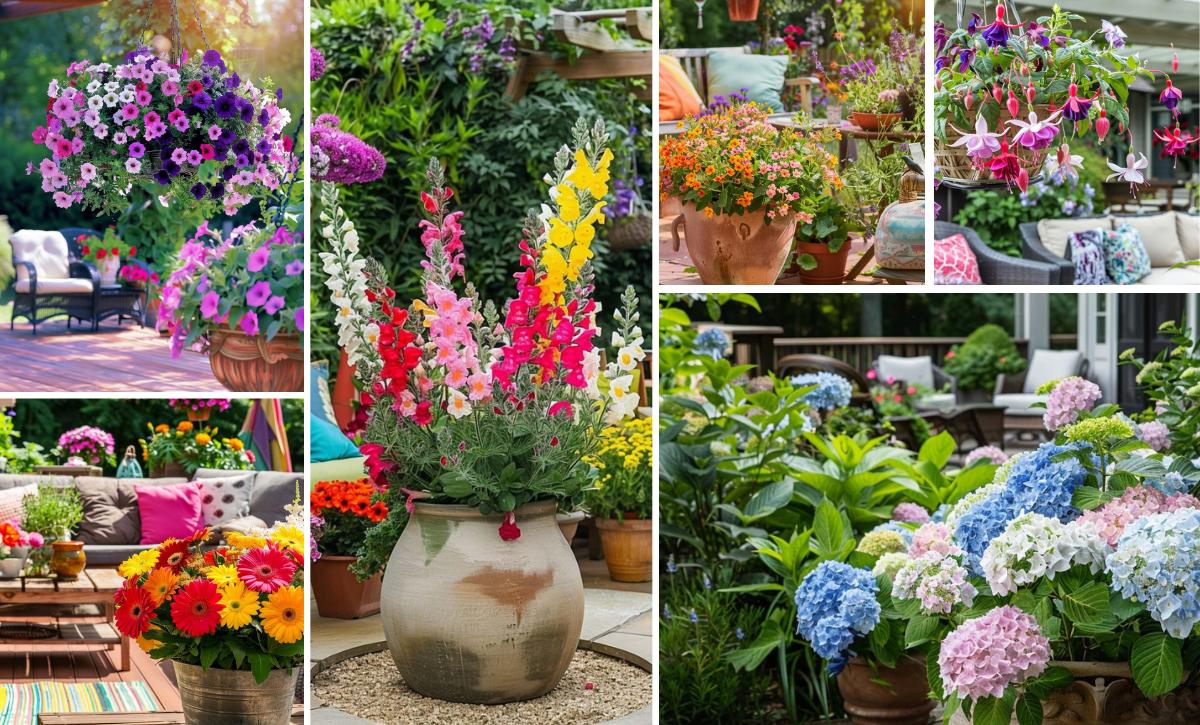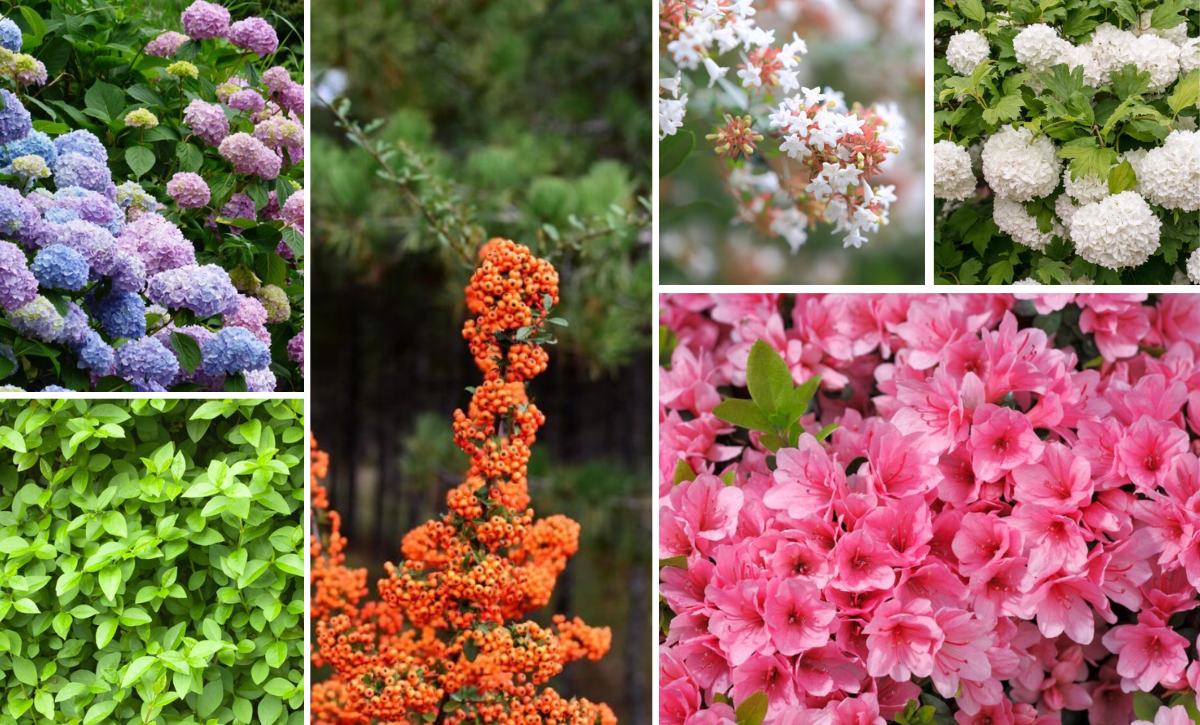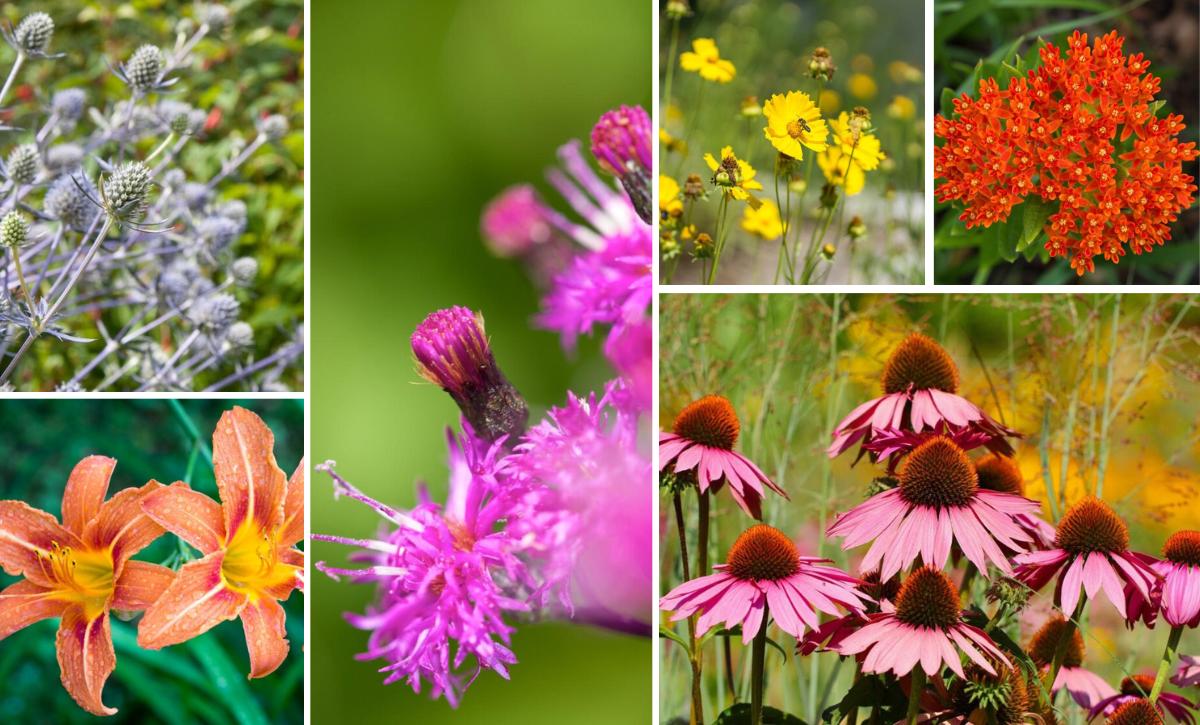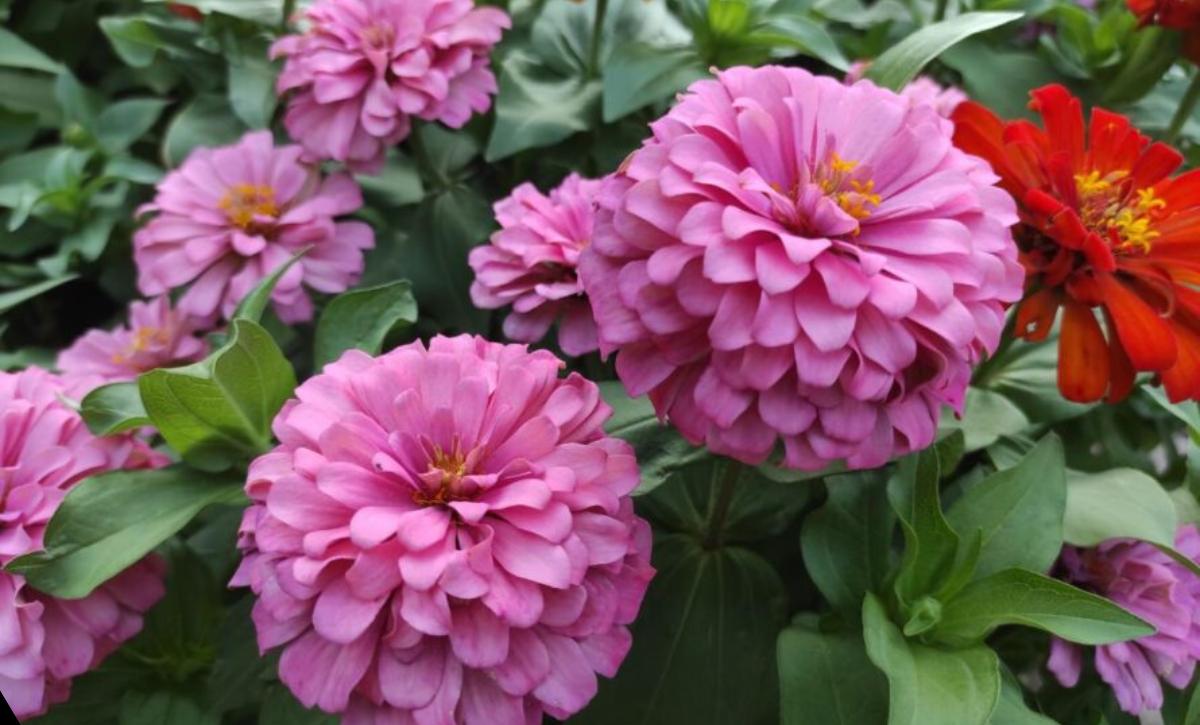When it comes to garlic, it’s either you love it or hate it. It’s one of those veggies with a truly distinctive taste, but most people detest it due to its smell.
Still, one fact remains: this Allium species is one of the most popular veggies grown in home gardens.
If you’re a gardener and you dream of growing garlic in your garden, you’re in luck! Today, we will examine the seven garlic growing stages, explaining what to expect from each step.
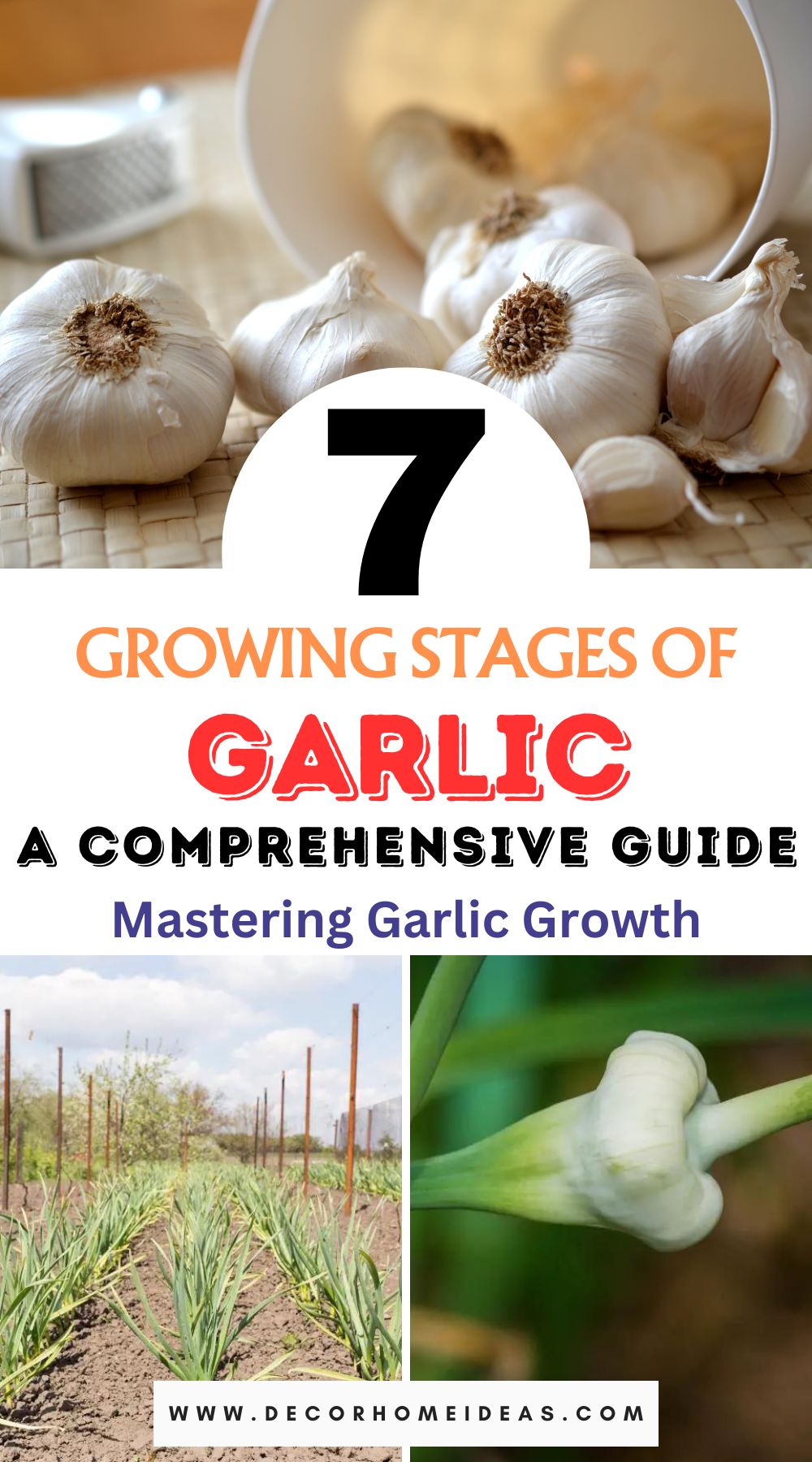
We’ll also cover the duration it takes to grow garlic, provide useful tips you might need when growing it, examine the best cultivars you can grow, and discuss problems you might face in your garlic-growing journey.
Let’s get right into it!
The 7 Garlic Growing Stages
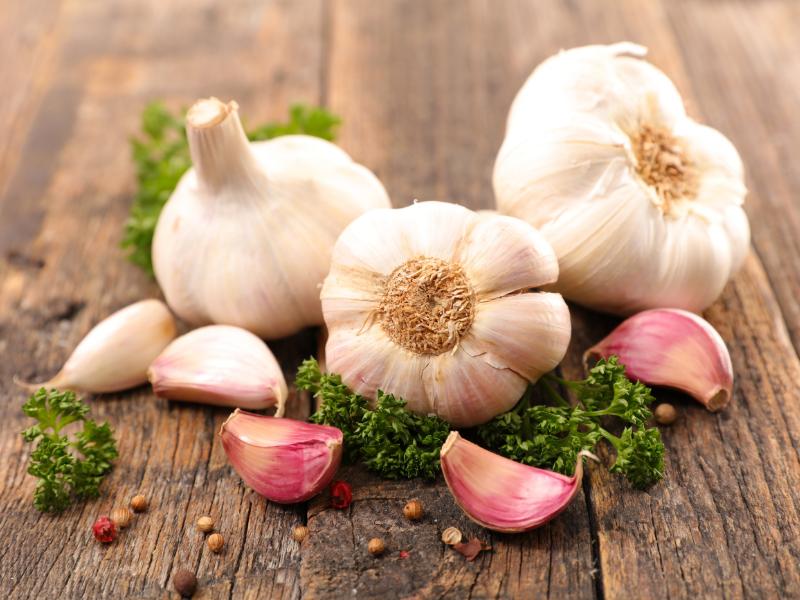
Here’s a list of the stages the Allium sativum goes through before harvest:
- Germination
- Spring or green garlic
- Scapes
- Young bulb formation
- Mature bulb
- Flowering
- Harvest
Let’s take a look at each one of them!
1. Germination
The garlic’s life cycle starts with germination. However, garlic germination is unique and differs from other plants or veggies; each can produce 6 – 15 cloves.
These cloves actually act as seeds, each developing into a bulb with 6 – 15 cloves. I guess now you have a rough idea of why their germination is regarded as remarkable.
The main reason we don’t grow garlic from seeds is that there aren’t any to plant!
I know, weird, right? Garlic is one of the earliest veggies to be cultivated; cultivation began around four thousand years ago. As time passed, the veggie lost its ability to produce seeds.
However, some varieties generate flowers in their lifetime, but they won’t develop seeds since they’ll die before that happens.
Deciding on the cultivar before you plant your garlic would be best. The reason is that some cultivars are suitable for fall planting, while you can start some in spring.
When you plant the garlic cloves in the fall, they’ll hibernate for 2 – 3 months, that is, before the shoot forms. The cloves put most of their energy into developing a robust root system to help them survive the harsh winters.
Hardneck vs Softneck Cultivars
Hardneck and softneck garlic cultivars have different times of planting. If you’re familiar with garlic cultivation or looked it up online, you’ve probably come across the term “vernalization.”
Vernalization is a process that growers typically use for hardneck garlic varieties. It’s what enables a garlic clove to divide into more cloves.
You don’t need to assist with the vernalization process if you plant your garlic in the fall since the natural environment will take care of everything.
On the other hand, if you plant your sativum plant in spring, you’ll need to enhance cold vernalization.
There are some softneck garlic varieties you can plant in the fall, but they’ll begin developing shoots at the end of winter.
2. Spring or Green Garlic
You can pick spring or green garlic once the plant develops new shoots. Keep in mind the bulbs below the soil line haven’t yet fully developed.
If you’re a fan of green onions, you ought to try spring garlic. It’s a spice used in numerous dishes, including green garlic toast, spring garlic risotto, or spring garlic pesto, and it tastes like mature garlic.
The critical thing about green garlic you need to remember is that you can’t store it like you do with mature bulbs. You can use it fresh or put it in your refrigerator and eat it within a week.
3. Scapes
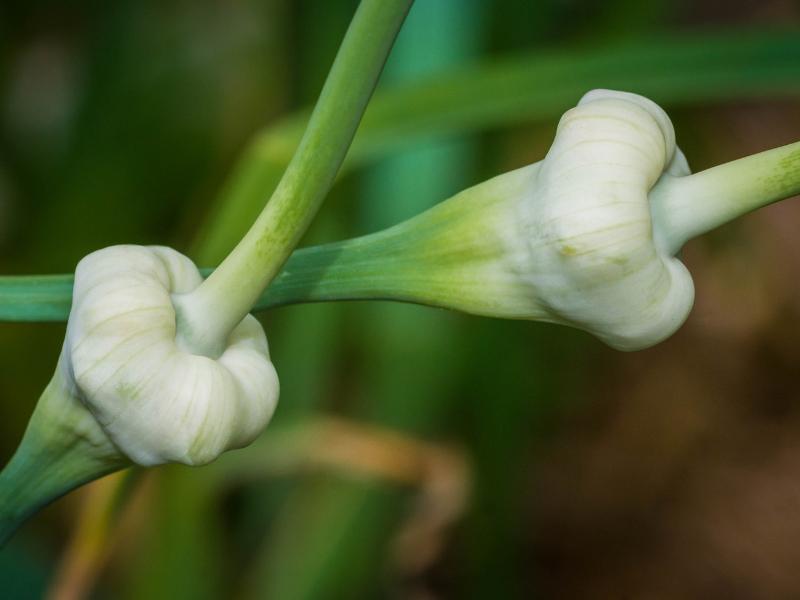
When browsing through products in the supermarket in your grocery run, you might come across some scapes on the supermarket’s shelves. These are actually flower stalks of the Allium sativum plant.
These scapes have long flower buds at the end and are sturdy. At this stage, the bud is still closed, and you need to pick your scape, or the bud will open and turn into flowers.
Is there any reason for removing the scapes? Yes, a couple, actually. The first one is the scapes’ taste. Most growers grill them or prepare some tasty soup!
The second reason leans more towards garlic cultivation; it encourages the bulbs to grow bigger.
Once you notice the stalk has developed its first loop, you can harvest garlic scapes. When your garlic starts producing scapes, it generally means the plant will be ready for picking in about a month.
4. Young Bulb
With garlic, you can harvest the bulbs even if they aren’t fully developed, which is a pretty cool thing. The bulbs have a similar taste to mature bulbs (only not that profound), but their storage capacity is different.
You can store the bulbs in the refrigerator for up to one week or, even better, consume them fresh.
It goes without saying that the bulbs won’t be as prominent as mature ones. Also, the young bulbs possess a different outer covering; it’s moist and leathery as opposed to mature bulbs’ skins, which are dry and papery.
5. Mature Bulb
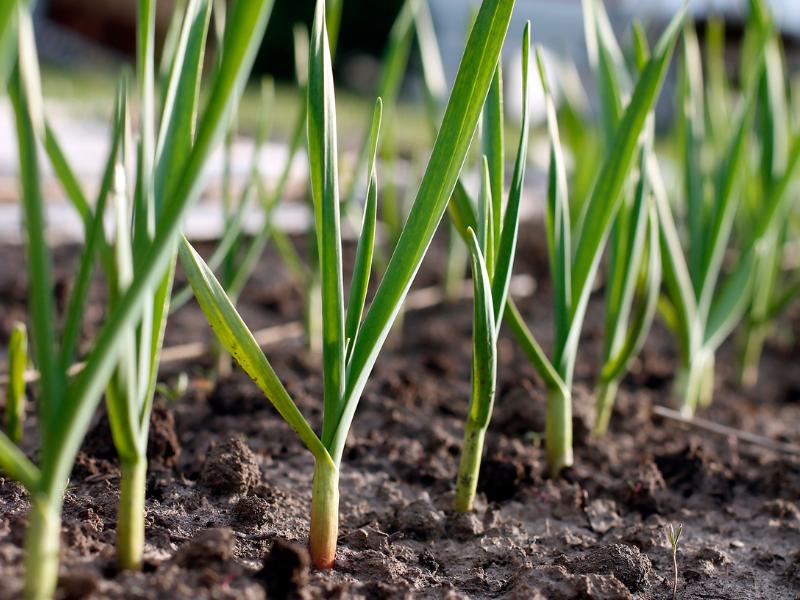
This stage is the most critical part of garlic cultivation. So, how will you know your bulbs are mature?
Garlic plants have meaty leaves, their stems stay upright and robust, and the heads’ skins differ when bulbs mature.
The garlic leaves begin turning yellow and eventually brown when your plant is ready for harvest.
Mature bulbs’ storage capacity and taste differ from young bulbs and scapes. At this stage, your garlic’s flavor is strong and recognizable, and you can store it for a long period.
6. Flowering Stage
During the flowering stage, you’ll notice some blossoms appearing on your garlic plant, and the scapes straighten up. You can also see small bulbils that you can store and plant next season.
The good thing about these bulbils is that they develop disease resistance, and you can adjust them based on your region’s conditions. However, developing these bulbils into mature bulbs can be quite challenging.
The Allium sativum plant may develop seeds at this stage, but as mentioned earlier, the seeds won’t germinate.
We highly recommend growing garlic cultivars from cloves rather than seeds or bulbils.
7. Harvest
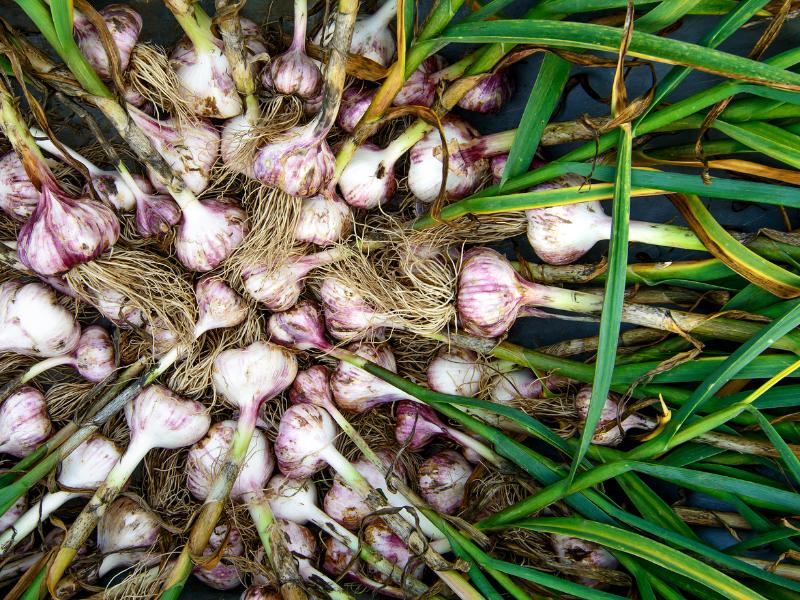
Preventing the rotting of bulbs when you store them is very essential, so you need to pick your garlic when less than half of the foliage turns yellow.
The bulbs can open if you wait too long before harvesting, and they can rot if you leave them in moist soil. When gathering your sativum plant, you must be cautious and pay close attention to avoid damaging the plant’s base.
Do away with the excess soil around the bulbs to prepare your Allium sativum plant for storage. Don’t remove stems or leaves from your garlic now, and find a cool and well-aerated space for it.
Once all the garlic parts are fully dry, you can eliminate the stems and outer layers with soil attached to them.
If you plan on growing garlic in your home garden next year, pick the healthiest and biggest bulbs after harvesting and place them in a cool and dry place.
How Long Will It Take To Grow Garlic?
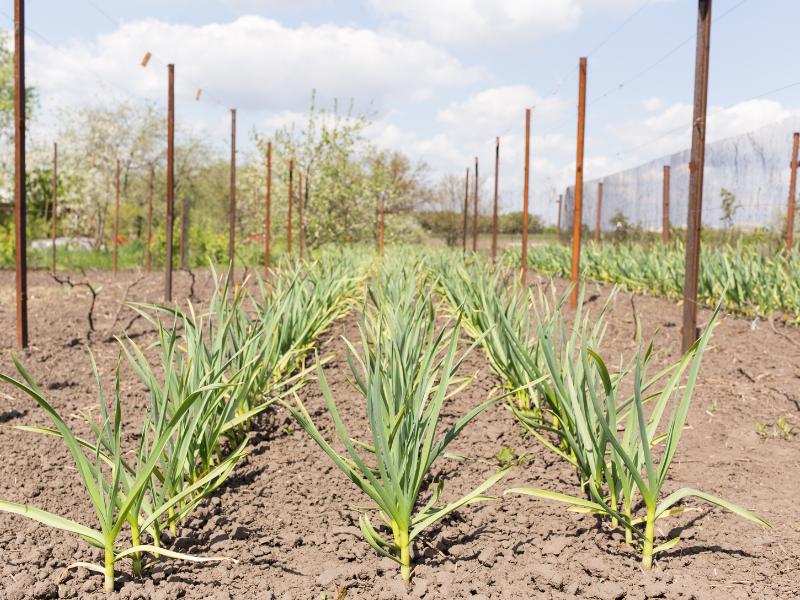
The time your garlic needs to develop fully depends on two variables: climate and variety. Normally, these remarkable veggies need at least nine months to mature.
If you live in the South, we recommend California White Late for summer harvest and California White Early for spring harvest.
We recommend growing cultivars like Spanish Roja, Chesnok Red, and German Red if you reside in the North.
The following section will highlight some useful tips to grow your garlic and keep it healthy and happy!
Tips for Planting Garlic
Here are the steps for planting your garlic:
1. Separate the garlic cloves from the bulb a few days prior to planting before sowing it. Don’t remove the clove’s outer layer.
2. Work in bonemeal or fishmeal to prepare the site.
3. Take the cloves you bought in a nursery or ones you saved and place each approximately 2 inches deep. Separate each planted clove with a space of at least 4 – 8 inches. Ensure the wider part faces down when planting the garlic clove.
4. We recommend at least 10 inches for the spacing between the rows.
Tips for Growing Garlic
The following are five tips for growing garlic plants:
1. Mulching: Consider adding a layer of mulch if you reside in an area with hard frost to protect fall-sown cloves. When the danger of frost passes or at the beginning of spring, remove the layer of mulch.
2. Feeding: Give your plant blood meal at the beginning of spring and early May.
3. De-weeding: Carefully observe the emergence of weeds because they can hinder your garlic’s growth.
4. Watering: Water your Allium sativum plant twice weekly when it develops young bulbs, and keep watering in line with that schedule until mid-June.
5. Companion planting: Tomatoes are great companion plants for garlic, so you should consider planting them together. You’ll have a pest-free garden as well as many tasty crops for your delicious recipes.
Common Garlic Issues
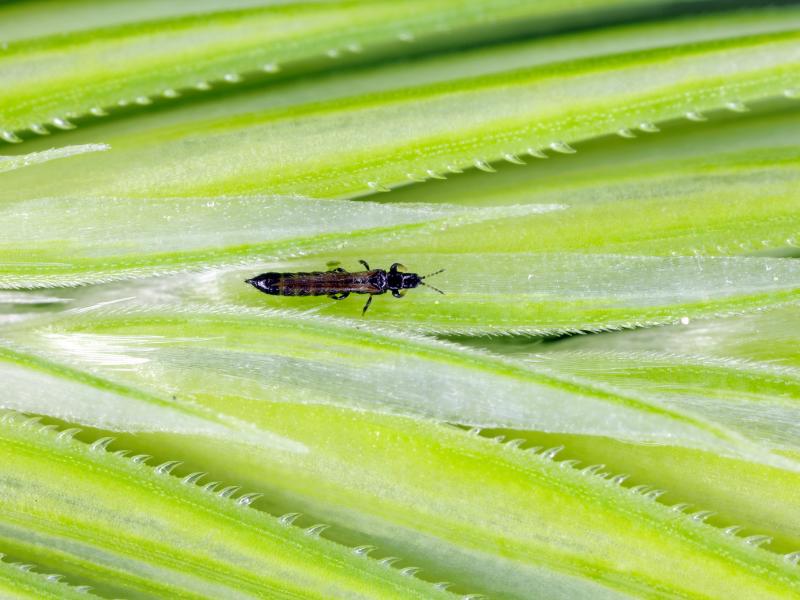
Even though garlic is a hardy plant, it’s still susceptible to some pests and diseases. Maggots are one of the pests that can affect your garlic plant, and your plant starts yellowing or displaying poor growth once infested. Use the crop rotation technique to protect your Allium sativum plant and put it on row covers.
Thrips can also infest your plant. Brown leaf tips, deformed bulbs, and white scars are some of the common signs of a thrip infestation in your garlic plant. Prior to planting, consider picking resistant varieties and introducing beneficial insects like lacewings and ladybugs.
The most common disease that affects garlic is white rot disease. You can control white rot disease through biological means, so we highly recommend seeking a professional since trying to cure it on your own is very challenging.
Summing Up
Knowing the garlic growing stages is essential to produce this delicious veggie in your garden.
We’ve provided the necessary information you need to know about various garlic growing stages and to have a successful garlic harvest, so you need only follow our advice; you’ll have a healthy and flavorsome crop in no time.
See you next time, bye!

